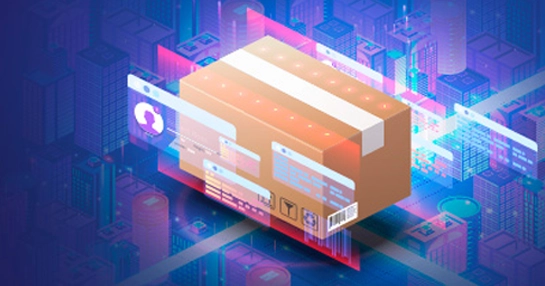-
GEP Software
-
- Procurement Software
- Direct Procurement Software
- Indirect Procurement Software
- Unified Source-to-Pay
- Source-To-Contract Software
- Procure-to-Pay
- Midsize & High Growth Enterprises
- Key Capabilities
- Spend Analysis
- Sourcing
- Contract Lifecycle Management
- Supplier Lifecycle Management
- Third-Party Risk Management
- Purchasing
- Payments
- Data Analytics and Reporting
- Do more with GEP SMART
- Intake Management & Orchestration
- Intelligent Category Management
- Tail Spend Management
- Cost Data & Analytics (GEP COSTDRIVERS)
- AI-First Supply Chain Management
- Supply Chain Visibility and Execution
- Logistics Visibility
- Inventory and Warehouse Management
- GEP Multienterprise Collaboration Network
- Supply Chain Control Tower
- Field Services
- Supply Chain Collaboration & Planning
- Supply Chain Planning
- Purchase Order Collaboration
- Forecast Collaboration
- Capacity Collaboration
- Quality Management Software
- Should-Cost Modeling
- Direct Material Sourcing
-
-
GEP Strategy
-
GEP Strategy
Unrivaled supply chain and procurement expertise + the transformative power of AI
Supply Chain Consulting
- Environmental, Social and Governance
- Sustainability Consulting Services
- Socially Responsible Sourcing
- Scope 3
- Demand and Supply Chain Planning
- Collaborative Planning
- Source To Contract
- Procure To Pay
- Inventory Strategy & Management
- Operations & Manufacturing Excellence
- GEP Total Inventory Management Solution
- Network Strategy & Optimization
- Warehousing & Transportation Management
-
-
GEP Managed Services
-
GEP Managed Services
World-class skills, experience and know-how — amplified by the power of AI
-


Sustainable Procurement: Unlocking Resilience, Innovation, and Profitability
Procurement teams are now at the forefront of driving environmental, social, and financial impact. As consumers demand transparency and investors prioritize ESG factors, companies must align their supply chains with sustainability to remain competitive.
How can procurement drive sustainability and profitability? By integrating environmental goals into their operations companies are transforming their supply chains.
This podcast, based on a GEP report, explores how businesses can tackle Scope 3 emissions, build resilient systems, and foster innovation through sustainable procurement.
What You'll Hear:
- Real-world examples of companies achieving sustainability through procurement.
- Strategies for building resilient supply chains.
- How collaboration drives meaningful change across supply chains.
This is a audio recording of a recent podcast.
PODCAST SUMMARY
This podcast delves into insights from the Harvard Business Review report, Optimizing Business Outcomes by Investing in Sustainable Supply Chains and Procurement, sponsored by GEP. The discussion highlights how sustainability is transforming procurement into a strategic function that drives innovation, reduces risk, and enhances profitability.
The Strategic Role of Procurement
Procurement is no longer just about cost-cutting; it now encompasses broader responsibilities that impact the environment, society, and corporate resilience. The report emphasizes how procurement’s influence has grown, giving it a critical role in addressing sustainability challenges and enabling businesses to adapt to disruptions.
ESG (Environmental, Social, and Governance) factors play a significant role in this shift, with investors increasingly prioritizing companies that demonstrate sustainable practices. Companies with robust sustainability initiatives have shown measurable benefits; for example, the CDP report cited in the podcast reveals that suppliers saved $33.7 billion in 2020 by reducing emissions.
Case Studies: Innovation in Action
The podcast features compelling examples of companies leveraging procurement to achieve sustainability goals:
• Goodyear: The tire company replaced petroleum-based oils with soybean oil in its products, showcasing how sustainable materials can be integrated without compromising quality.
• Bayer: The pharmaceutical giant committed to ensuring 75% of its suppliers achieve strong sustainability scores while supporting diversity by sourcing from women-owned businesses.
• Veolia North America: This environmental services company embeds sustainability across its procurement processes, from office supplies to machinery, setting high standards for its supply chain.
These examples demonstrate how aligning procurement with sustainability creates opportunities for innovation, reduces environmental impact, and strengthens supplier relationships.
Challenges in Sustainable Procurement
While the benefits of sustainable procurement are clear, several challenges remain:
1. Scope 3 Emissions: These are emissions originating from the supply chain, often the largest and hardest to track. Companies must work closely with suppliers to gather accurate data and create transparency.
2. Stakeholder Engagement: Building trust and collaboration across the supply chain is essential. Suppliers must be willing to share data and align with sustainability goals.
3. Measurement and KPIs: Defining and tracking key performance indicators (KPIs) is critical for accountability. Companies often perform materiality assessments to identify the sustainability issues most relevant to their stakeholders.
Benefits of Sustainable Procurement
The report underscores how sustainable procurement delivers significant advantages:
• Risk Mitigation: Diversifying suppliers and sourcing locally reduce dependency on fragile global supply chains.
• Cost Savings: Energy efficiency and waste reduction lower operational costs for both companies and suppliers.
• Brand Trust: Consumers increasingly support brands aligned with their values, leading to stronger loyalty and higher sales.
• Innovation: Sustainability challenges often drive breakthroughs in sourcing and materials, giving companies a competitive edge.
Conclusion
Sustainable procurement is more than a trend—it’s a transformative approach reshaping how businesses operate. By embedding sustainability into procurement processes, companies can build resilience, foster innovation, and achieve long-term success. The podcast concludes with a call to action, encouraging businesses, investors, and consumers to champion sustainability through informed choices and collaborative efforts.
TO LISTEN, Please Enter your EMAIL
JUST A FEW MORE THINGS ABOUT YOU









